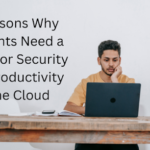In today’s digital age, the evolution of technology is exponential. As the volume of data is increasing to unimaginable heights, companies are now shifting to cloud-native technology and rethinking their data management infrastructure strategy. If you’re considering migrating from ETL (Extract, Transform, Load) systems to the cloud, this blog is the perfect start.
While moving from ETL systems to the cloud is a strategic move for businesses, there are various challenges in the process. In this blog, we cover four of them in detail.
Challenges in ETL migration (& insider tips to solve them!)

Let’s talk about the four main challenges faced during ETL migration to the cloud – and what tips you can use to tackle them.
1. Creating an in-depth cloud migration strategy
The first and most common challenge is unclear, poorly thought ETL migration strategy.
In the process of ensuring the ETL migration is flawless, the basics aren’t covered properly – and this leads to analysis paralysis – the inability to decide due to overthinking. An individual or a group can have too much data. The result is endless wrangling over the upsides and downsides of each option and an inability to pick one.
Solution:
When building your ETL to cloud migration strategy, it’s essential to define your primary business objectives behind the move. When you have a list of business objectives you want to achieve, it’s easier to create a migration strategy that’s in-line with your business goals.
Before choosing the cloud-native stack for the migration process, it’s crucial to start with the basics and answer a few questions, such as:
- What is the main reason for migrating to the cloud?
- Why was ETL not enough for our business needs?
- What goals do we wish to achieve by migrating ETL to the cloud?
This way, you have a well-thought migration plan and can also navigate through the transition swiftly and track how the shift affects your business.
2. Meeting security and privacy standards
Lack of security is the top reason why enterprises think twice before moving to the cloud. It’s a major deal-breaker. Why? Enterprises still have problems trusting third-party cloud services with private data, even if they are promised highly secure cloud environments.
In addition, the increase in cybersecurity threats and malicious attacks has only strengthened this fear of moving to the cloud.
Solution:
It’s essential to document specific security features you’re looking for when migrating to the cloud. With a comprehensive list, it’s easier to choose a cloud environment that perfectly fits all your requirements.
Before you decide, there are a few questions you can as your cloud service provider:
- Do you have any security policies and procedures in place?
- Are you compliant with various security regulations?
- Do you offer end-to-end encryption?
- How and where do you store data on the cloud?
3. Managing migration costs
Cost-optimization is another challenge many companies face when migrating to the cloud. Without analyzing and coming up with an estimate of the financial impact, the cloud migration process can become a costly affair.
Although, with time, you can reduce costs through streamlined workflows and improved productivity. However, achieving this goal is complicated and expensive.
Solution:
Always be prepared. Have a rough estimate before moving to the cloud. Connect with your cloud provider, discuss all parameters, and list the expenses you’ll incur in the process. The planned cost must include:
- Migration costs
- Cloud platform infrastructure costs
- Financial risks associated with slow adoption
- Training requirements post migration
4. Enabling the cloud adoption process
Cloud migration entails a lot of change. From new systems to processes to leadership, bringing significant change to enterprises can be difficult and, usually, people tend to resist such major changes. Resisting change is a significant problem that leads to an unsuccessful cloud migration journey.
Solution:
An in-depth change management plan with key strategies is the key to streamlining the cloud adoption process. The C-level leadership and top leaders play are vital in driving employee engagement and cloud adoption. So, the leadership must understand the business requirements and objectives for moving to the cloud.
Once employees understand why the company is choosing to move to the cloud, they are more likely to support the change.
Automating and streamlining migration to the cloud with LeapLogic
Making the shift to the cloud is a complex task requiring a comprehensive strategy. LeapLogic, an Impetus accelerator for automated workload transformation, enables enterprises to modernize and transform legacy systems to the ideal cloud environment. Enabling companies to reach their ETL migration goals, LeapLogic ensures a successful implementation from start to finish. LeapLogic brings intelligence and automation to the entire modernization process for ETLs, thereby improving speed and accuracy while lowering risks and costs.







